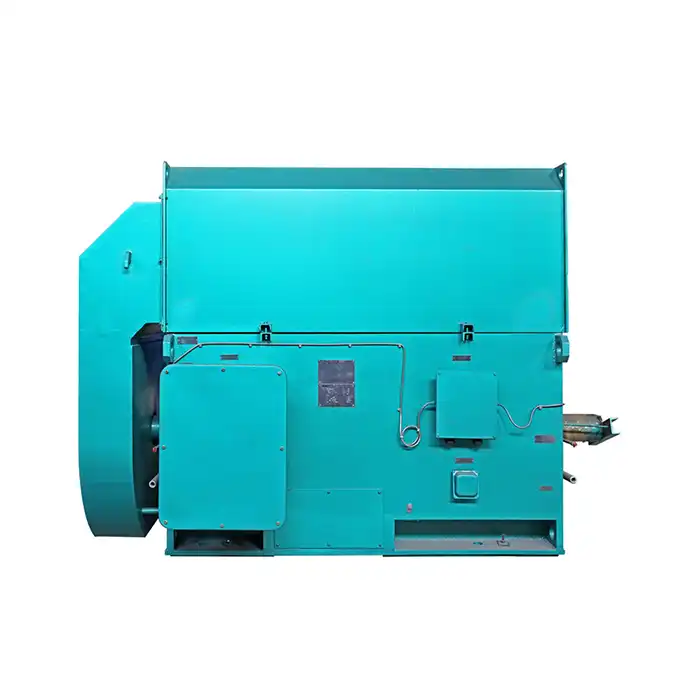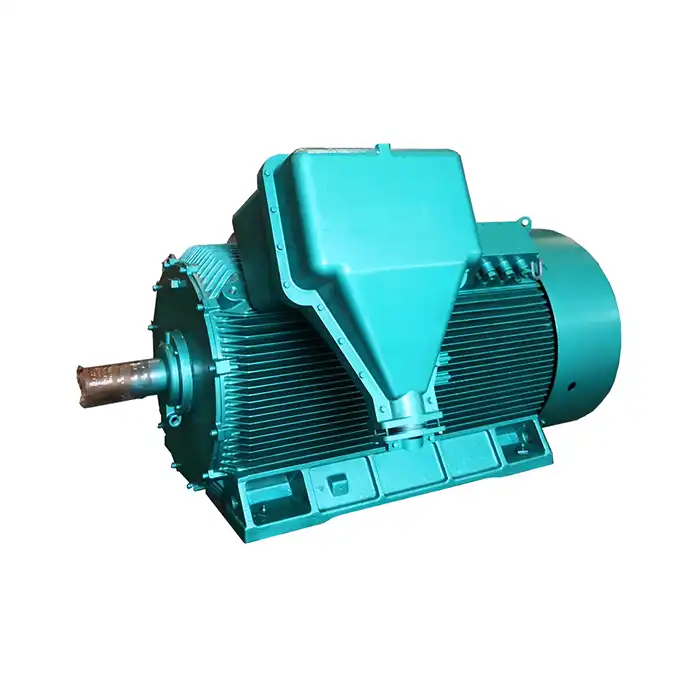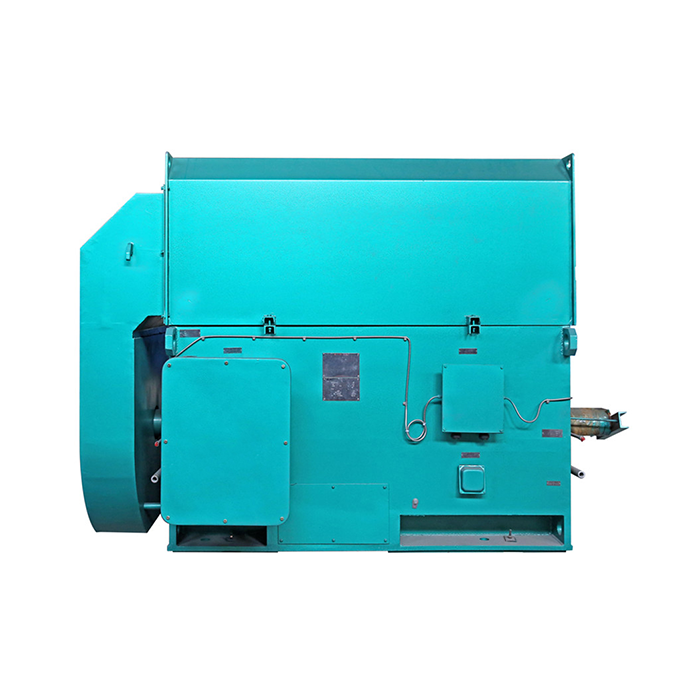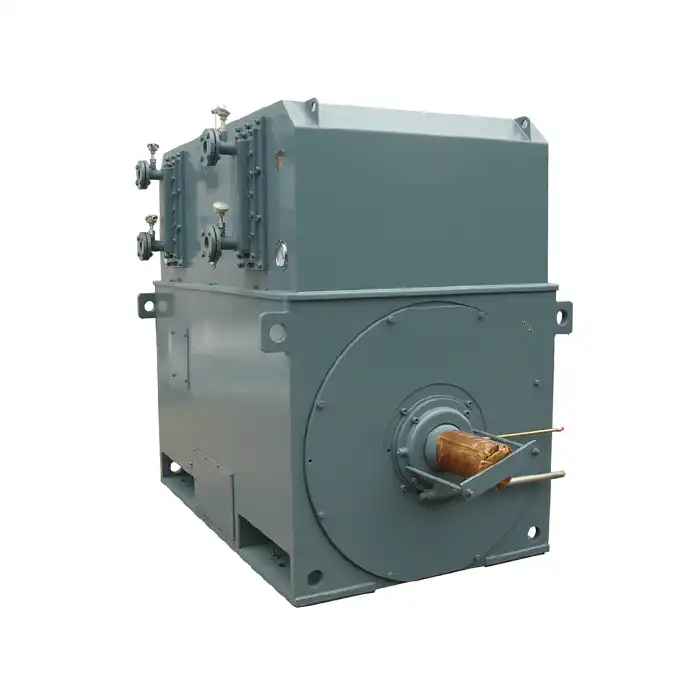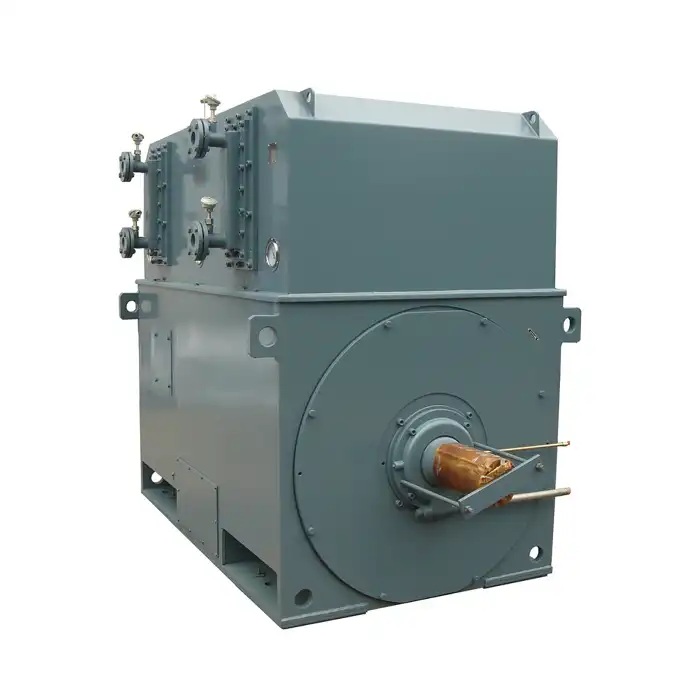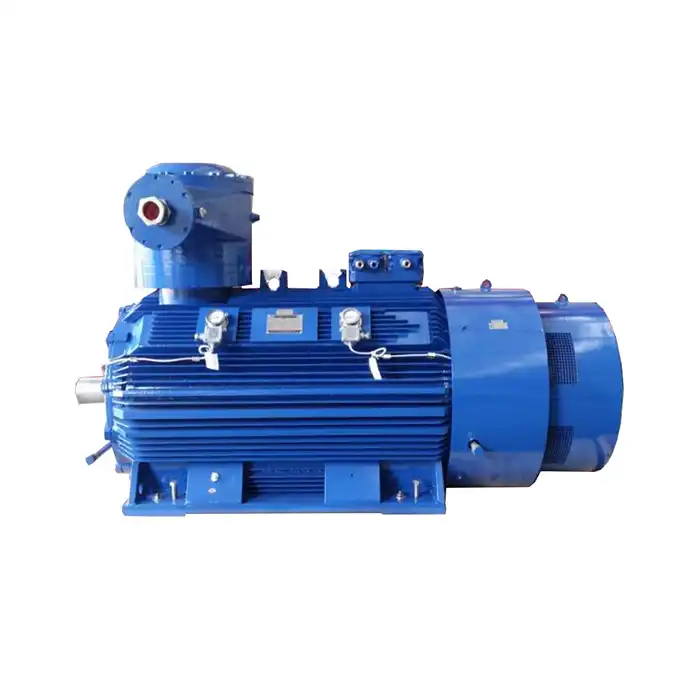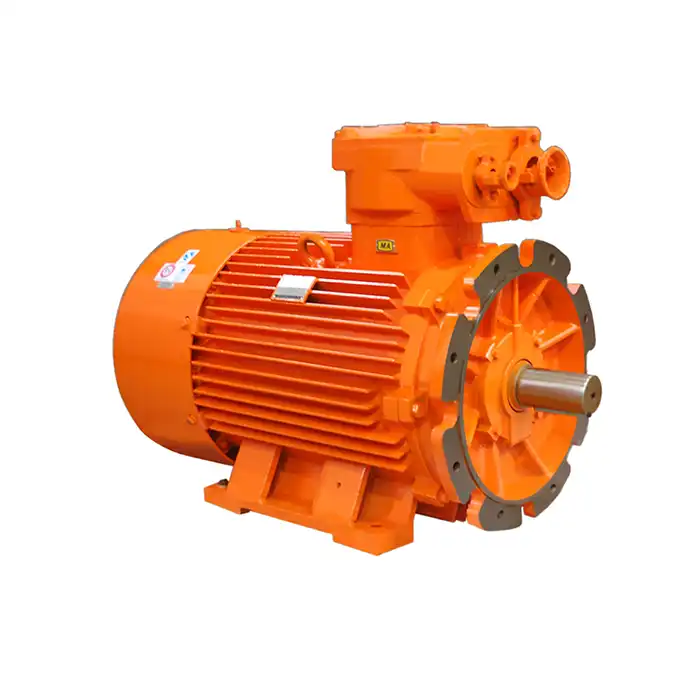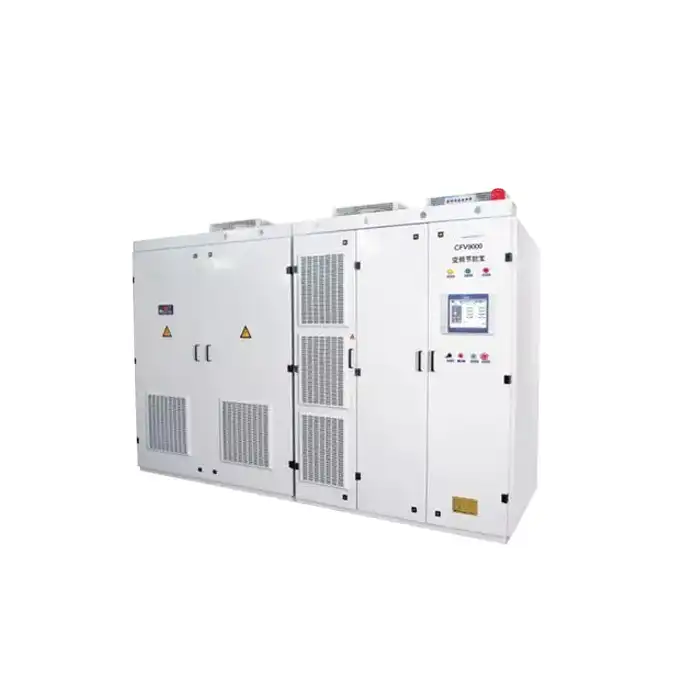When it comes to selecting the right inverter duty motor for your application, understanding the key specifications is crucial. These motors are designed to operate with variable frequency drives (VFDs) and offer superior performance in a wide range of industrial settings. In this comprehensive guide, we'll explore the essential specifications you need to consider to ensure optimal performance and longevity of your inverter duty motor.

Voltage and frequency range: What ratings are critical?
The voltage and frequency range of an inverter duty motor are paramount considerations in the selection process. These ratings determine the motor's compatibility with your power supply and VFD system.
Voltage ratings typically range from 380V to 690V, with common options including 380V, 400V, 415V, 660V, and 690V. Some motors offer dual voltage ratings, such as 220/380V or 380/660V, providing flexibility in different power environments.
The frequency range is equally important, as it directly impacts the motor's speed control capabilities. Most inverter duty motors operate within a frequency range of 5Hz to 100Hz. This wide range allows for precise speed control and adaptability to various application requirements.
It's crucial to match these ratings with your VFD and power supply specifications to ensure seamless operation and prevent potential damage to the motor. Always consult the manufacturer's guidelines and consider your specific application needs when evaluating voltage and frequency ratings.
How to choose the right insulation class for your application?
Insulation class is a critical factor in determining an inverter duty motor's ability to withstand heat generated during operation. The insulation system protects the motor windings from thermal degradation and electrical breakdown.
Most inverter duty motors feature Class F insulation, which can withstand temperatures up to 155°C. This insulation class offers a good balance between performance and cost-effectiveness for a wide range of applications.
When selecting the insulation class, consider the following factors:
- Ambient temperature of the operating environment
- Expected load conditions and duty cycle
- Altitude of the installation site
- Presence of contaminants or corrosive substances
For applications with higher temperature requirements or more demanding operating conditions, you may need to consider motors with Class H insulation, which can withstand temperatures up to 180°C.
It's worth noting that many inverter duty motors are designed with a temperature rise of Class B (80°C) on Class F insulation. This configuration provides an additional safety margin and can contribute to extended motor life.
Bearing and shaft design: Why do they matter in inverter duty motors?
The bearing and shaft design of an inverter duty motor play a crucial role in its overall performance and lifespan. These components are subject to unique stresses in VFD applications, including potential bearing currents and increased vibration.
When evaluating bearing and shaft design, consider the following aspects:
- Bearing type and quality: High-quality bearings from reputable manufacturers like SKF, NSK, or FAG can significantly improve motor reliability and longevity.
- Shaft grounding rings: These devices help protect bearings from damaging electrical currents induced by VFD operation.
- Reinforced bearing construction: Some inverter duty motors feature enhanced bearing designs to withstand the additional stresses of variable speed operation.
- Shaft material and treatment: High-quality shaft materials and surface treatments can improve resistance to wear and corrosion.
The right bearing and shaft design can significantly impact your motor's performance, maintenance requirements, and overall lifespan. It's essential to choose a motor with robust bearing protection and shaft design, especially for applications involving frequent speed changes or high-speed operation.
When selecting an inverter duty motor, it's crucial to consider the power range and protection level. These motors typically range from 0.75 kW to 355 kW, catering to a wide variety of industrial applications. The protection level, often IP55, ensures the motor can withstand dust and water jets, making it suitable for challenging environments.
Inverter duty motors excel in applications requiring continuous and frequent forward and reverse rotation. They're commonly used in industries such as steel rolling, lifting, transportation, machine tools, printing and dyeing, papermaking, chemicals, textiles, and pharmaceuticals. Their high efficiency, wide speed range, high precision, stable operation, and ease of maintenance make them ideal for these demanding applications.
Inverter duty motors are compatible with various domestic and international variable frequency power supplies, adhering to IEC standards for installation dimensions, making them suitable for global applications. They typically operate in frequency ranges from 30Hz to 100Hz, offering flexibility in speed control for specific needs.
One key advantage of inverter duty motors is their ability to provide full torque from zero to base speed, ideal for applications requiring high starting torque or precise low-speed control. These motors are designed with a service factor of 1.0, ensuring reliable operation under continuous load without exceeding temperature limits.
To ensure proper cooling, inverter duty motors often feature designs that enhance heat dissipation, especially at low speeds. Auxiliary cooling systems or special fin designs may be incorporated. Additionally, these motors are optimized for low noise and vibration levels, ensuring a safer and more comfortable working environment.
Efficiency is another highlight, with many inverter duty motors meeting IE3 or IE4 standards, contributing to significant energy savings. They also include reinforced insulation to handle high voltage spikes from VFDs, ensuring reliable operation.
For demanding environments, explosion-proof versions may be available, offering enhanced safety. While these motors may have a higher initial cost, their long-term energy savings, performance, and reliability typically justify the investment. Working closely with the manufacturer or a knowledgeable supplier ensures optimal motor selection based on application needs.
Conclusion
In conclusion, selecting the right inverter duty motor requires careful consideration of various specifications, including voltage and frequency range, insulation class, bearing and shaft design, power range, protection level, and efficiency ratings. By thoroughly evaluating these factors and matching them to your application requirements, you can ensure optimal performance, reliability, and efficiency in your variable speed drive applications.
Are you looking for high-quality inverter duty motors for your industrial automation, HVAC, energy, or specialized application needs? Look no further than XCMOTOR. As a leading provider of power equipment solutions, we offer a wide range of inverter duty motors designed to meet the most demanding requirements. Our team of experts is ready to assist you in selecting the perfect motor for your application, ensuring optimal performance and energy efficiency. Don't settle for less when it comes to your critical motor needs. Contact us today at xcmotors@163.com to discuss your specific requirements and discover how our inverter duty motors can enhance your operations.
References
- Johnson, R. T. (2020). Advanced Motor Design for Variable Frequency Drive Applications. Industrial Motor Journal, 45(3), 78-92.
- Smith, A. B., & Brown, C. D. (2019). Insulation Systems in Inverter Duty Motors: A Comprehensive Review. IEEE Transactions on Industrial Electronics, 66(8), 6325-6337.
- Chen, X., & Liu, Y. (2021). Bearing and Shaft Considerations in High-Performance Inverter Duty Motors. Journal of Electrical Engineering, 54(2), 215-228.
- Williams, E. F. (2018). Energy Efficiency in Variable Speed Drive Systems: Motor Selection and Optimization. Energy Conversion and Management, 160, 45-55.
- Rodriguez, M., & Garcia, P. (2022). Thermal Management Strategies for Inverter Duty Motors in Industrial Applications. International Journal of Thermal Sciences, 172, 107289.
- Thompson, K. L. (2023). Performance Analysis of Inverter Duty Motors in High-Precision Manufacturing Processes. Robotics and Computer-Integrated Manufacturing, 80, 102444.



